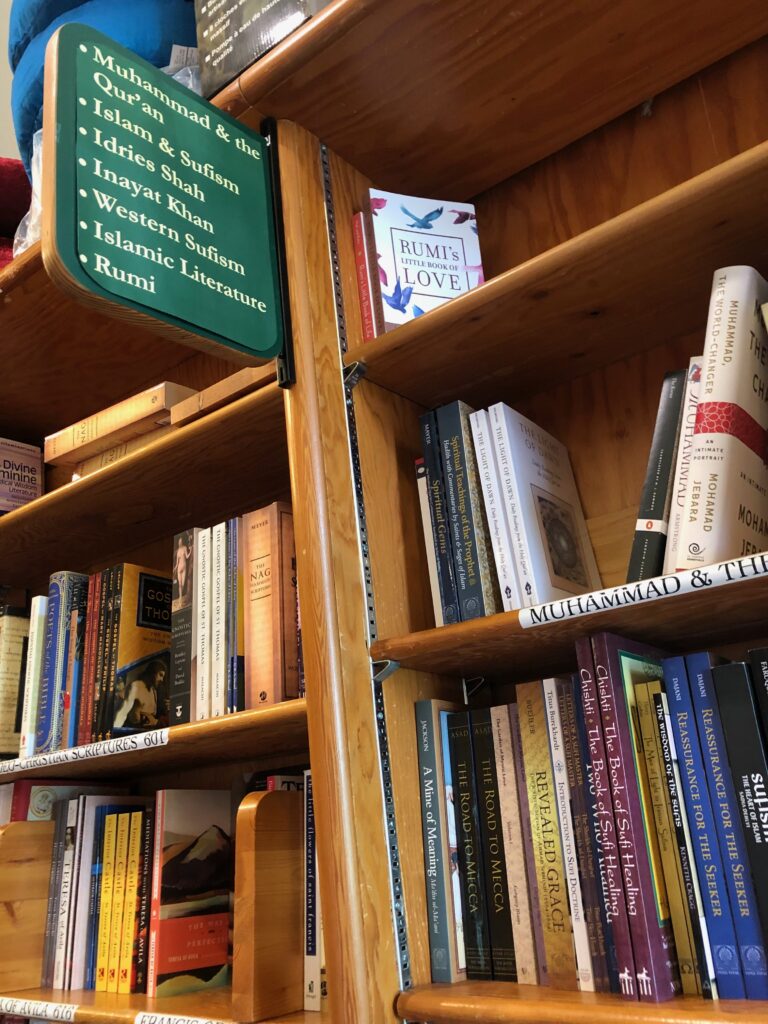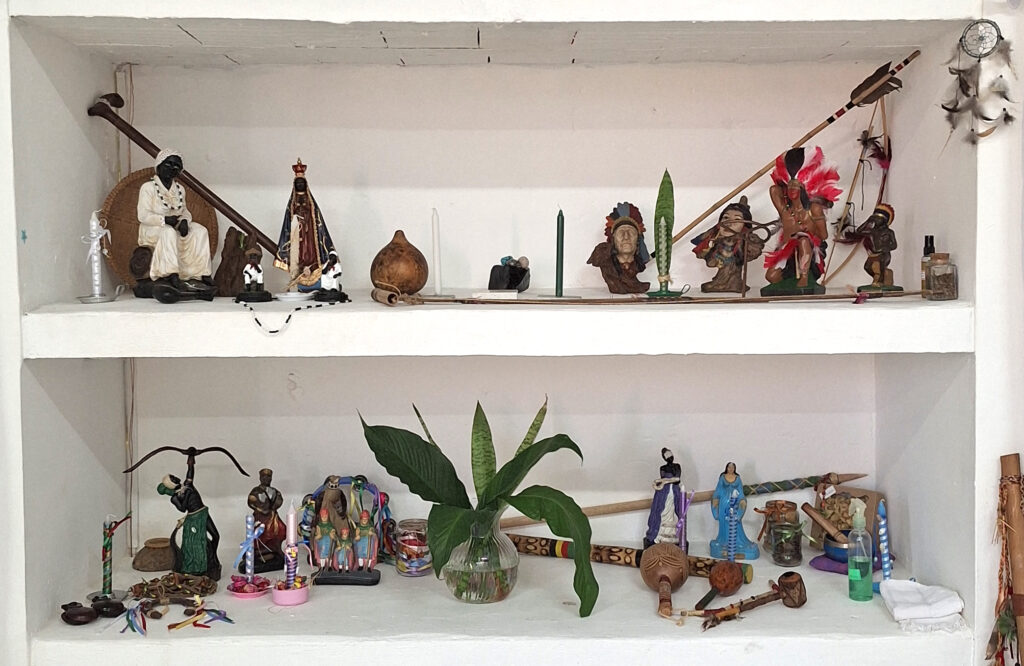
I recently gave a talk titled “Relational Ontologies of Illness, and the Nigerian Sahel.” I explored conversations of religious healers with spirits about how, when, and where shifting ecologies of the Sahel are affecting human and spirit movements, and lafiya, a Hausa term for health, well-being and balance. I also suggested ways that human and non-human beings and things of the Sahel are mutually constituting one another, in vibrant visceral exchanges, as they take something lively from one another. The scattered small-leafed trees and woody scrubs, for instance, draw attention to the shade they produce, offering up leaves and roots for food and medicine. Rivers and rock formations carve into the Sahel, cooling and watering its inhabitants. And, spirits, known in the Hausa language as iskoki (winds) and inuwoyi (shades), travel with the winds and dwell in the shady coolness of trees, holes, rock formations, and water, along with numerous animals and plants that ecologically tolerate the Sahel’s wet and dry seasons. Their relative abundance depends on the seasons, and shared histories—from centuries of settlement, cultivation, and resource extraction, to movements for trade, pilgrimage, water, and pasturage.
Though the Sahel and Sahel-Savannah have been warming since the early 1900s, there has been a sharp rise in temperature and rainfall variability since the 1970s, increasing both dry heat, and humidity and flooding. These conditions affect microbial vectors of illnesses, too, and the reliability and safety of cultivated and wild foods, and herbal medicines. In 1995-96, after the concurrence of mass spirit possession and one of the largest meningitis epidemics in Nigeria’s history, spirits began to complain to malams and to sarakuna Bori (leaders of the Bori religion) about the human destruction of their shared environment. Spirits who prefer coolness were especially concerned about being displaced as trees were cut, leaving them vulnerable to extreme heat and dryness. Spirits and microbes were traveling more rapidly, in winds and sand, blowing across a more barren land. Spirits were angry about the boom of industries, and the increasingly noxious sights and smells of industrial pollution, which they said, drove them away from their preferred dwelling places into human settlements. Spirits claimed humans were less friendly than in earlier years, more reckless in their movements, stepping on them and their babies without care. The conversations of religious healers with spirits began to shape ecological perspectives about the existence, the right to exist, and how to maintain lafiya or health, well-being and balance, in their shared ecologies. In my talk, I gave specific examples about how beings and things drew attention to themselves, responded, assembled and vitally affected one another to co-produce illnesses, and to heal. Spirit and matter, in my analysis, are neither one and the same, nor detangled, but relational ontologies—whether involving spirits, humans, plants, animals, microbes or industrial chemicals—that affected how, when, and where illnesses emerged, and healing took place.
In the past few weeks alone, flooding across Nigeria has killed hundreds of people and displaced over a million, destroying their homes, farms, and businesses, and the wild and domesticated plants and animals around them. While “one health” approaches to the COVID-19 pandemic brought attention to the interrelations of human health with the plants, animals and microbes of our shared environments, my research extends such perspectives further, to include spirits and the intimate social lives of spirits with humans and other non-humans that have material effects. This research helps us to think about how shifts in relational ontologies and ecologies of the Sahel, and elsewhere, affect health and healing today, and what the possibilities are for future health.

A lively question and answer session followed the talk, with members of the audience particularly interested in the diversity of practices Bori healers and malams used to communicate with spirits. I described these sensory, relational practices, whether calling Bori spirits with music and songs, or using plants recommended by spirits, to the spirit exorcisms of reformist malams, whose forceful Qur’anic readings heated up spirits, to expel them from their human hosts. There were questions about spirits’ agencies and intentions, how, for instance, spirits chose particular people to possess, or whether the same spirit might possess multiple people, or entire families and other social groups. And, the audience asked about the politics of healing and healthy ecologies, and how diverse Bori and Islamic healers perceived human-spirit contact, understood the relational aspects of spirit possession and co-occurring ills, and responded to one another, as humans communicating with spirits. Mass spirit exorcisms, for instance, underpinned extensive conversions of spirits and possessed humans to reformist Islam, in advance of the 1999-2000 implementation of shari’a criminal codes in twelve states of northern Nigeria. But, the affective senses of contamination and care did not align with any particular spiritual-political position among healers or diverse sectors of society, eliciting ongoing debates over appropriate contact between humans and spirits. The stimulating questions I received help me to think through some of the questions I have about my own research: If we consider illnesses of the Sahel and Sahel-Savannah, and forms of healing with the compositions of beings and things that come together to affect people, will we redistribute forms of agency, in ways that rearrange what is medically sensible and knowable? In other words, will perspectives on peoples’ eco-intimacies and relational ontologies—those that highlight ecologically infused sensibilities and a diversity of sensory and neurological affects, feelings and perceptions—enable us to develop more effective, inclusive approaches to public and ecological health?
#
Conerly Casey is a Research Fellow with the Center for Advanced Studies, Friedrich-Alexander University in Erlangen-Nuremberg, Germany, and an Associate Professor of Anthropology at the Rochester Institute of Technology in Rochester, New York, United States. Her current book project, Eco-Intimacies and Illnesses of the Nigerian Sahel, considers the beings and things of the Sahel, as they draw attention to themselves, respond, assemble, and vitally affect one another to co-produce illnesses, and to heal.
__
CAS-E blogs may be reprinted with the following acknowledgement: “This article was published by CAS-E on December 2, 2022.”
The views and opinions expressed in blog posts and comments made in response to the blog posts are those of the author(s) and do not necessarily reflect the views and opinions of CAS-E, its founders, its staff, or any agent or institution affiliated with it, nor those of the institution(s) with which the author is affiliated.
__
Image credits: © Abdulhamid Yusuf, 1996.








